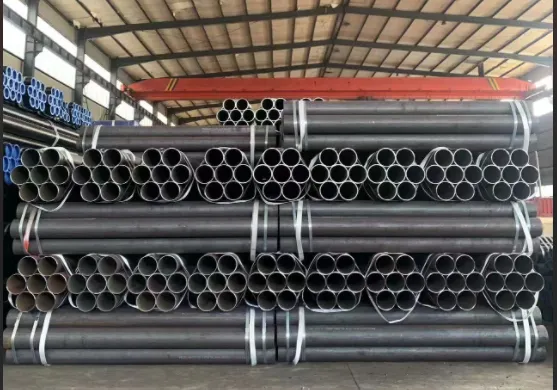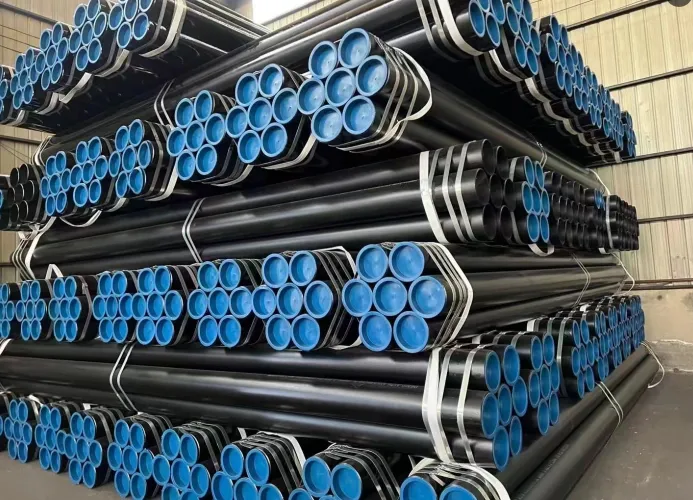Key Characteristics:
- 1.Material Composition:
- - API 5L X42 pipes are made from carbon steel and may contain other alloying elements to enhance certain properties.
- - Typical chemical composition includes:
- - Carbon (C): ≤ 0.20%
- - Manganese (Mn): 1.20% - 1.60%
- - Phosphorus (P): ≤ 0.025%
- - Sulfur (S): ≤ 0.025%
- - Silicon (Si): ≤ 0.40%
- 2. Mechanical Properties:
- - Yield Strength: Minimum yield strength of 42,000 psi (290 MPa).
- - Tensile Strength: Minimum tensile strength ranging from 60,000 psi to 80,000 psi (414 MPa to 552 MPa).
- - Elongation: Depending on the thickness of the pipe, elongation values typically range from 20% to 23%.
- 3. Dimensions and Specifications:
- - API 5L X42 pipes are available in various wall thicknesses and diameters.
- - The pipes come in different nominal pipe sizes (NPS), typically ranging from 1/2 inch to 48 inches and beyond.
- - Common wall thicknesses include Standard Weight, Extra Heavy, and Double Extra Heavy.
- 4. Manufacturing Process:
- - Pipes can be produced through either seamless or welded processes, with seamless pipes typically offering higher strength and durability.
- - Manufacturing standards ensure compliance with rigorous quality control measures, including non-destructive testing (NDT) methods.
- 5. Coatings and Finishes:
- - API 5L X42 pipes may be supplied with various protective coatings to prevent corrosion, including:
- - Bare steel (uncoated)
- - FBE (Fusion Bond Epoxy)
- - 3LPE (Three-Layer Polyethylene)
- - 3LPP (Three-Layer Polypropylene)
- 6. Applications:
- - Oil and Gas Industry:Primarily used for the transportation of natural gas, oil, and water in pipelines for upstream and midstream applications.
- - Water Infrastructure: Can be utilized in water distribution systems and for transporting potable water.
- - Industrial Applications: Used in various industrial applications for transporting materials under pressure.
- 7. Standards and Compliance:
- - API 5L X42 pipes comply with various national and international standards, ensuring reliability and safety in the oil and gas industry.
- - Additional specifications may involve compliance with ISO and ASTM standards, depending on the requirements of a specific project.
- 8. Testing and Quality Control:
- - Pipes undergo comprehensive testing, including:
- - Hydrostatic testing to check for leaks
- - Non-destructive testing (e.g., ultrasonic, radiographic)
- - Mechanical testing to verify yield and tensile strength
- Summary:
- API 5L X42 pipes offer high strength, durability, and corrosion resistance, making them suitable for various applications in the oil and gas industry, water infrastructure, and industrial scenarios. With a minimum yield strength of 42,000 psi, they are designed to withstand high pressure and harsh environmental conditions. When selecting API 5L X42 pipes, it’s important to consider factors like pipe size, wall thickness, coating options, and compliance with relevant standards to ensure optimal performance and safety in the intended application. Regular maintenance and inspection are also recommended to ensure long-term durability and reliability.
Write your message here and send it to us
















